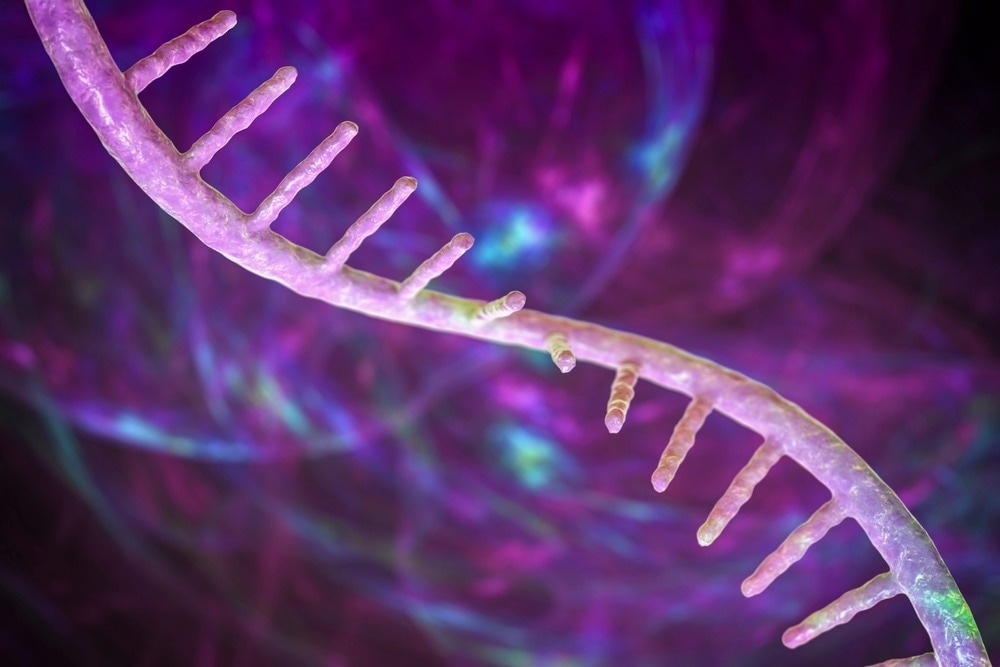Stress granules are aggregates that are made up of protein and RNA molecules. These arise predominantly from stalled translation initiation complexes that form reversibly after the cell is subject to stress. They can also store translationally silent mRNA. Stress granules can alternatively precipitate in the formation of toxic protein aggregates in the cell; this is usually seen in the context of neurological disease.

Image Credit: Kateryna Kon/Shutterstock.com
Stress granules are distinct, phase-separated, membrane list, cytoplasmic ribonucleoprotein assemblies. Their main function is to ensure self-survival as they condense elements of the translation and machinery, including stalled mRNAs, translation initiation factors, ribosomal subunits and components, and RNA-binding proteins.
Stress Granule Regulation
This stress response occurs in the following way. Firstly, cellular stress can induce the phosphorylation of eukaryotic initiation factor 2 alpha (eIF2α). This is considered the trigger that induces the formation of stress granules. However, the formation of these molecules can be independent of eIF2α, instead of occurring via eukaryotic translation initiation factor 4A (eIF4A).
Regardless of the mechanism through which stress granule assembly begins, they culminate in releasing RNA molecules from polysomes and causing them to form stress granules to inhibit translation. By releasing RNA from polysomes, RNA can act as a scaffold.
RNA binding proteins are subsequently nucleated on this scaffold, which then initiates the assembly of the stress granules. Due to being released from polysomes, researchers believe this RNA is translationally silent when incorporated in stress granules.
However, studies have demonstrated that some mRNAs are translationally active, which indicates that the release from the polysomes is insufficient to recruit RNA into stress granules.
How do Stress Granules Form?
When RNA binding proteins and mRNAs coalesce to form the beginning of a stress granule, a ribonucleoprotein granule is formed. This organelle is not contained by a membrane and contains two sub-compartments: the shell under the core. The core represents a highly concentrated area of mRNA and protein. The shell is less concentrated and more dynamic. There is little evidence available to deduce the differences between these two sub-compartments; however, they are thought to differ in composition, dynamics, and function.
How stress granules can compartmentalize is a result of liquid-liquid phase separation. This liquid-liquid phase separation is primarily driven by weak electrostatic, hydrophobic, and protein-protein interactions between ribonuclear binding proteins.
The intrinsically disordered domains present on the ribonuclear binding proteins mediate this interaction, which can be homo- or heterotypic. RNA can also self-assemble to induce the formation of liquid-liquid phase separation; This demonstrates that RNA-RNA interactions are also playing an essential role in the formation of stress granules.
Stress Granule Dynamics
Stress granule structures are dynamic and undergo remodeling using ATP. Once the cell stress is relieved, stress granules can disassemble in an ATP-driven process. This is thought to include inhibition of DNA/RNA heater cases that traditionally stabilize the stress granules, the activation of autophagic pathways that promote the degradation of protein, or the activation of heat shock proteins 40 and 70.
ATP, therefore, is central to the assembly, dynamic remodeling, and disassembly of stress granule components. This is critically important to avoid the persistence of granule formation, a phenomenon associated with various diseases.
RNA is thought to play a role in mitigating excessive interactions between proteins which are known to lead to pathological aggregates (as evidenced in a host of neurodegenerative diseases). Therefore, alongside ATP, there is a need to balance protein-protein, RNA-protein, and RNA-RNA interactions to assemble and disassemble stress granules appropriately.
The rate at which stressed granules form is shown to be dependent on the nature of the stress. Oxidative stress induced by sodium arsenite causes stress granule formation within 30 minutes of exposure. Contrastingly, double-stranded DNA breaks thus have been induced by ultraviolet exposure, resulting in stressed granule formation after a much lower rate, at 18 hours and upward.

Image Credit: Tatiana Shepeleva/Shutterstock.com
Under stress induced by sodium arsenite, stressed granules coincide with the phosphorylation of eIF2α. Contrastingly, under UV stress, stress granule formation coincides with the arrest of the cell cycle in the S phase. This is hypothesized to prevent the progression of the cell cycle until DNA damage is repaired. This demonstrates the specificity of this stress response in so subject to ultraviolet and may explain the longer assembly time required for stress granules. Sodium arsenite, by contrast, tends to induce a general response, which is subsequently more rapid.
How the stress is applied also affects the rate at which the stress granule forms. Pharmaceutical approaches to sodium austenite administration illustrate this; when this is administered via intragastric means, distressed granule formation occurs within two hours rather than 30 minutes. This serves to illustrate that the stress type has a substantial mechanical impact on the formation of stress granules – in both the in vivo and in vitro context.
Stress granules also interact with other ribonucleic protein granules to regulate RNA expression and metabolism.
What are the Functions of Stress Granules?
Stress granules are sites of mRNA triage, in which individual messenger RNAs are all sorted for storage, degradation, or translation. mRNAs that possess AU-rich destabilizing elements in the 3’ untranslated region binds to TTP and BRF1/2, which are proteins that promote interactions between stress granules and units called P-bodies. This induces the decay of messenger RNA. It is also likely that stress granules link the sorting of messenger RNP sorting with other signaling events.
Stress responses result in the inhibition of translation, with the subsequent formation of cytoplasmic RNA-protein complexes called stress granules. Stress granules subsequently affect mRNA translation and stability. Persistent or aberrant stress granule formation is associated with the development of neurodegenerative disease and some cancers.
Further Reading
Last Updated: Jun 5, 2023